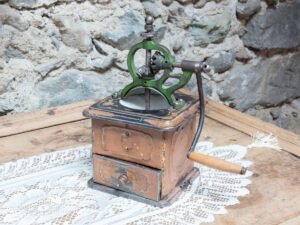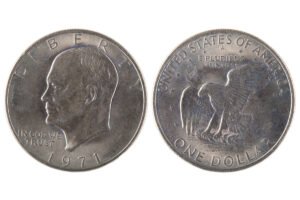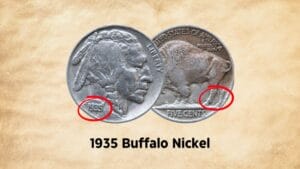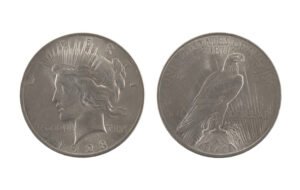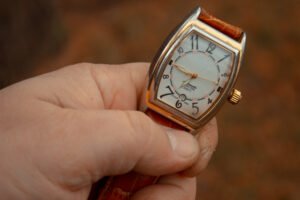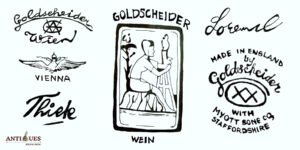Coffee is indeed one of the most loved, instant mood saviors of all time! So loved that some crazy fellas still collect the old, manual coffee grinders for a fresh decoction. But since they don’t have labels, dating such old coffee grinders is a task!
Well, old coffee grinders might not have dates, but they have unique marks and features that speak about the era they come from! And today, we’ll see how to use such tips to date and value your vintage coffee grinder.
Key Takeaways
- You can date your antique coffee grinders by patents, model numbers, and country codes found on their base or top.
- The earliest 1700s coffee grinders had wood or metal walls, followed by glass, ceramic, and steel, respectively.
- Aging signs like bare wood finishes, uneven thickness, and manual levers indicate a 1700s grinder, while the electric or belt-driven blades belong to the 1900s.
- Try to get antique coffee grinders with simple European, American, or Middle Eastern designs for an old make.
Key Features of Old Coffee Grinder to Date Them

If you want to date your coffee grinder manually, look for these aged features:
- Stamps and marking of brand names, logos, manufacturing year, origin, serial numbers, etc.
- Wood or metal boxes, often with glass jars and hoppers
- Unique burr grinders with manual blades and choppers
- Intricate Victorian, Rococo, or Art-deco paintings on the surfaces
- Wall-mounted, countertop, or portable models with metal clamps and mounts
A Brief History of Antique Coffee Grinders
Most collectible coffee grinders belong to the 1500s Persia and Yemen empires. But, before that, there were simple coffee mortars and pestles with revolving stones for crushing. But they were coarse and didn’t grind a fine powder.
Then, in the 1800s, Friedrich Gottlob Keller invented a manual coffee grinder using a simple wooden box with rotating blades for the mixer. It also had a small drawer and levers to hold and control the grinding speed. But even then, the coffee was coarse.
Further, in the 1850s, a professional dentist, Thomas Bruff, added wheels to the coffee grinder. Later, he improved the design with cast-iron walls, drawers, and floor clamps, which made them functional and more collectible!
6 Types of Antique Coffee Grinders (With Values)

Let’s check some era-specific coffee grinder types, their age, and critical features here:
| Old Coffee Grinder Type | Year | Top Identifying Features | Estimated Value |
| Box or Mill Grinders | 1700s | Square or Rectangular boxes with internal burr grinders & base drawers | $100 – 1500 |
| Wall-mounted Grinders | 1800s | Cast iron or Glass grinders with attached metal hoppers, clamps, and wall brackets | $80 – 1000 |
| Lap or Knee Mills | 1800s | Small and portable coffee grinders with manual levers & rectangular grips designed to hold between the knees | $40 – 500 |
| Brass Turkish Coffee Grinders | 1800s | Small & cylindrical brass grinders with ornate, carved designs & long handles on top | $10 – 800 |
| Double Wheel Grinders | 1850s | Comes with two large wheels, manual levers & decorative inlays | $300 – 2000 |
| Early Electric Grinders | 1900s | Commercial-level metal or glass jars with electric plugs, sockets, and motor-operated grinders | $10 – 500 |
6 Steps to Date Vintage Coffee Grinders & Assess Their Worth
Now, let’s see how you can use different coffee grinder marks, materials, and colors to date your antique:
1. Look For Marks & Logos

It’s true that old coffee grinders don’t have any dates or stamps. But they still have some year-wise marks and patent numbers that help track their age and value. So, let’s check how to spot, identify, and appraise each of them:
Patent Numbers: One of the key features of the 1800s and 1900s coffee grinders, patent numbers help track the model’s date, mechanism, and design. So, look for such stamped or engraved numbers on the grinder’s body, base, handle, or hoppers.
Here’s how to spot and date such marks:
| Vintage Coffee Grinder Patent Number | Year | Age | Estimated Value |
| US2900140A | 1950 | 64 – 73 years | $90 – 1000 |
| US3482790A (Coffee Mills) | 1960 | 54 – 63 years | $50 – 800 |
| US2549275A (Toledo Scale Corp) | 1940 | 74 – 83 years | $90 – 1200 |
| US2229031A | 1930 | 84 – 93 years | $100 – 1500 |
Model And Series Mark: If your old coffee grinder has an etched company name or model number on the front or base, it might be a new 1900s model. Also, look for automatic cranks, levers, and blades with them. Here are a few examples:
| Old Coffee Grinder Model Number | Year | Age | Average Cost |
| Charles Parker No. 1 | 1880 – 1920 | 103 – 143 years | $300 – 2000 |
| Fray & Clark No. 20 | 1890 – 1920 | 103 – 133 years | $150 – 1500 |
| Arcade King No. 1 | 1900 – 1930 | 93 – 123 years | $90 – 1000 |
| Kenrick No. 1 | 1850 – 1920 | 103 – 173 years | $100 – 1200 |
Country Origin Mark: Old coffee grinders with import or country-specific marks usually date back to the 1900s. But if you want the exact years, check the table below:
| Antique Coffee Grinder Country Marks | Year | Age | Average Cost |
| Made in USA | 1800 – 1900 | 123 – 223 years | $300 – 2000 |
| Made in Germany | 1900s | 114 – 123 years | $100 – 1200 |
| Made in Austria | 1930s | 84 – 93 years | $80 – 900 |
| Made in Italy | 1950 | 64 – 73 years | $40 – 500 |
| Made in France | 1950 | 64 – 73 years | $50 – 700 |
Size or Capacity Stamps: If your old coffee grinder has exposed screws, cranks, or levers with a ‘1lb,’ ‘3lb,’ or ‘5lb’ stamp, it might be an old 1700s model. Also, look for embossed brew strength and serving-size stamps on the base.
2. Check the Materials

One of the easiest methods to date an old coffee grinder is its material. For instance, the earliest 1700s grinders used brass and wood, while the later ones worked with glass, ceramic, and steel.
But how will you use the material to date your old coffee grinder? Find out below:
| Old Coffee Grinder Materials | Years | Unique & Collectible Features | Estimated Cost |
| Alloyed Metal & Brass | 1700 – 1800 | Thin, cylindrical bodies with long handles and Turkish designs | $300 – 2000 |
| Wood | 1800s | Lacquered beech, walnut, mahogany & oak boxes with metal handles and drawers | $100 – 1500 |
| Cast Iron & Alloyed Steel | 1800 – 1900s | Thin & flexible grinders with etched motifs and regional designs | $200 – 1000 |
| Glass, Porcelain & Ceramic | 1950s | Simple, wall-mounted grinders with bright-colored, intricate designs, patterns, and wood backs | $80 – 800 |
| Stainless Steel | 1960s | Automatic or Electric grinders with Bakelite handles, knobs, and sockets | $40 – 500 |
Pick antique coffee grinders with original shellac, bronze, or lacquer finishes for a good value.
3. Check Its Power Source

The earliest 1700s grinders had manual or rotating grinders that worked on kinetic and wind energy. In contrast, the 1800s coffee grinders had wheels, while those from the 1900s used plugs and electricity.
So, let’s check this aging factor in detail below:
| Antique Coffee Grinder Power Source | Years | How do they work? | Average Price |
| Manual (Handpowered) | 1700 – 1900 | Work on a manually rotating handle & burr blades | $200 – 2500 |
| Flywheel | 1800s | Use a large flywheel that rotates the blades and grinds coffee | $300 – 1900 |
| Belt-Driven | 1800 – 1900s | Use a moving belt to transfer power from the motor to the grinding mechanism | $100 – 800 |
| Electric | 1950s | Work on electricity, plugs, and sockets | $50 – 900 |
4. Observe the Colors

The earliest 1700s coffee grinders might have bare wood or metal walls. But the later 1800s models might also have Red, Blue, Green, or Yellow finishes. So let’s track and date all such colors!
| Vintage Coffee Grinder Colors | Average Price |
| Black, White & Gray | $200 – 1500 |
| Beige & Brown | $60 – 900 |
| Blue & Green | $50 – 1800 |
| Red, Yellow & Orange | $100 – 1600 |
| Metallic Gold & Silver | $50 – 1200 |
5. Check the Brand
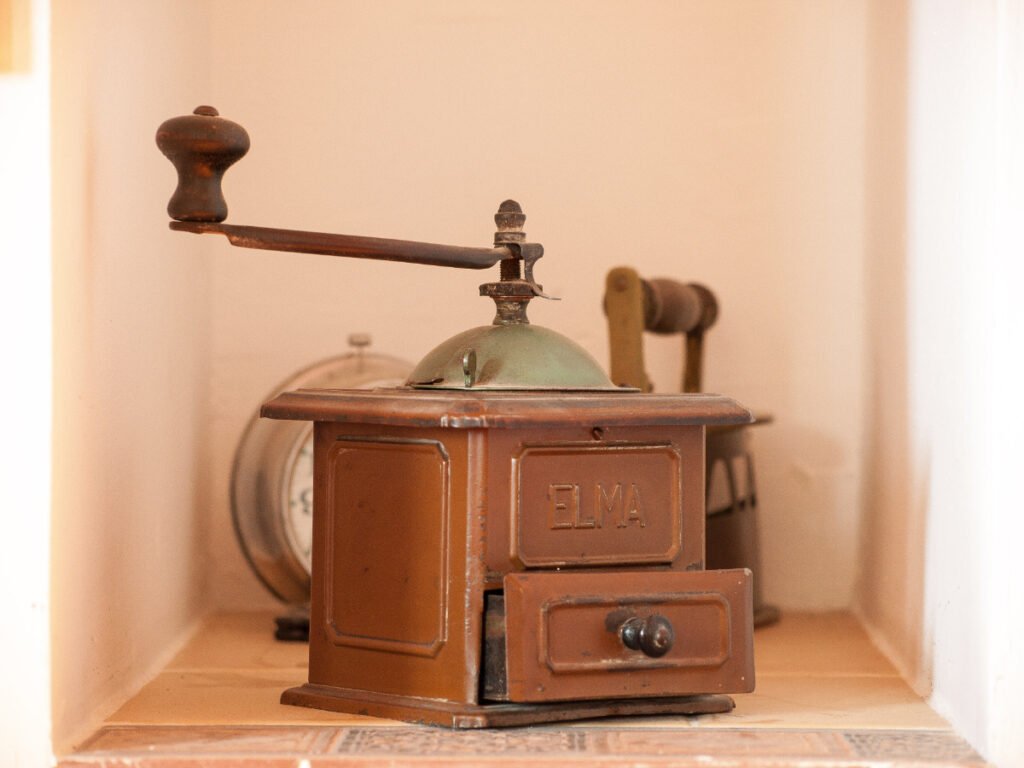
Want a shortcut to identify and date your old coffee grinders? Just observe it, and check if there’s a brand logo, stamp, or sign on the grinder’s front, base, or back. If yes, note the name, and check its year and value from our table:
| Antique Coffee Grinder Brands | Years | How to identify them? | Estimated Cost |
| Peugeot | 1800 – 1900 | Iconic & stylized ‘Lion’ logo with wooden box mills & metal mechanisms | $40 – 900 |
| Enterprise Mfg. Co. | 1900 – 1920 | Two-toned ornate & heavy cast iron grinders | $900 – 2800 |
| Arcade Manufacturing Company | 1920 – 1950 | Transparent boxes with glass hoppers, wall-mount models & box grinders | $100 – 1000 |
| Kenrick & Sons | 1800s | Superior cast-iron grinders with a black finish and gold branding | $90 – 500 |
| Zassenhaus | 1900s | Wooden box or knee mills with precise grinding mechanisms | $50 – 800 |
| Parker Nation | 1900s | Large box and floor-standing models with ornate designs & carvings | $40 – 800 |
| Landers, Frary & Clark | 1950s | Unique cast-iron & cylindrical coffee grinders with a ‘Universal’ stamp | $100 – 1500 |
| Spong & Co. | 1870s | Wall-mounted or Countertop grinders with a stamped logo at the base | $50 – 1000 |
Avoid getting cracked, broken, or faded coffee grinders, as they don’t cost much.
6. Analyze the Styles

Does your antique coffee grinder have European or floral motifs? If yes, it might be an old, Federal, or European-style model from the 1700s. But, if it has regional American or Asian motifs, it might be new, mostly from the 1900s.
Here’s a list of some popular coffee grinder styles, their years and estimated costs:
| Old Coffee Grinder Styles | Years | Average Price |
| European (Western & Central type carvings) | 1700s | $100 – 1800 |
| American (Glass motifs) | 1800s – 1900s | $80 – 1000 |
| Middle Eastern Grinders (Turkish coffee settings) | 1800s | $70 – 500 |
| British Grinders | 1900s | $50 – 900 |
| Asian Grinders | 1900s | $50 – 600 |
| Latin American Grinders | 1950s | $100 – 1500 |
What Are the Numbers on Old Coffee Grinders?
The stamped, embossed, or etched numbers on your old coffee grinder might indicate its patents, grinder capacity, and bean size. And if the grinder is branded, the numbers could also be a specific model or serial number.
What is the Lifespan of an Old Coffee Grinder?
With proper maintenance and oiling, old coffee grinders usually last for 20 – 30 years. But with proper oiling and servicing, you can restore and use the grinder’s levers even today!
How Do You Clean an Antique Coffee Grinder?
Pour about ¼ cup of rice into your grinder, and grind it continuously for a minute until it’s pulverized. Now, wipe the grinder with a wet paper towel, and leave it to dry.
Small tableware antiques like old coffee grinders, teapots, meat cleavers, and knives might not have dates, but they have specific marks, materials, and colors that track their age! All you have to do is dust the pieces and compare those with our table. Also, check if there’s a stamped logo or sign to verify it!
Note: This article is intended for informational, educational, and entertainment purposes only. Some images are illustrative and may not represent actual brands, products, or related entities. All trademarks, product names, brand logos, packaging, and other intellectual property referenced remain the exclusive property of their respective owners. Any brand mentions or references are provided solely for descriptive and educational context and do not imply any formal or commercial association.

